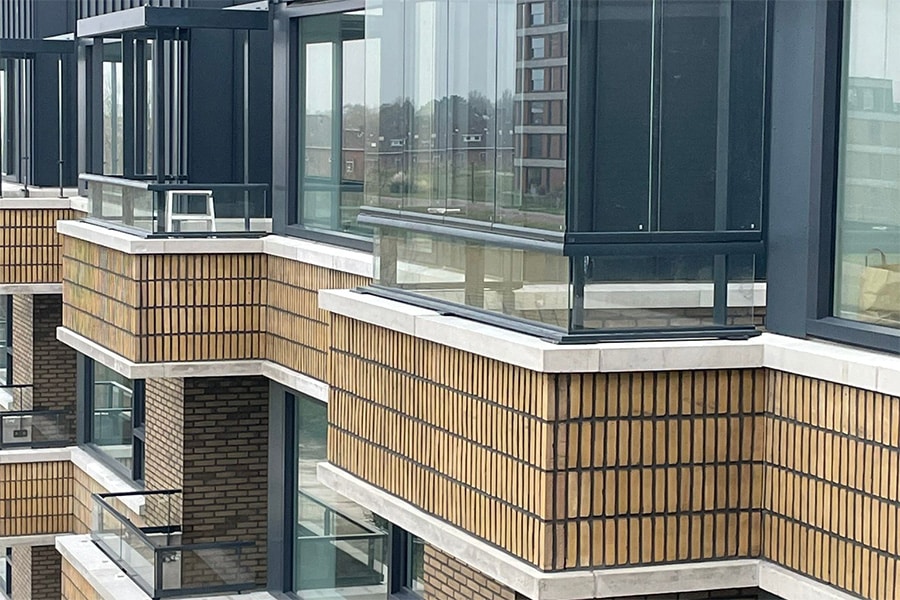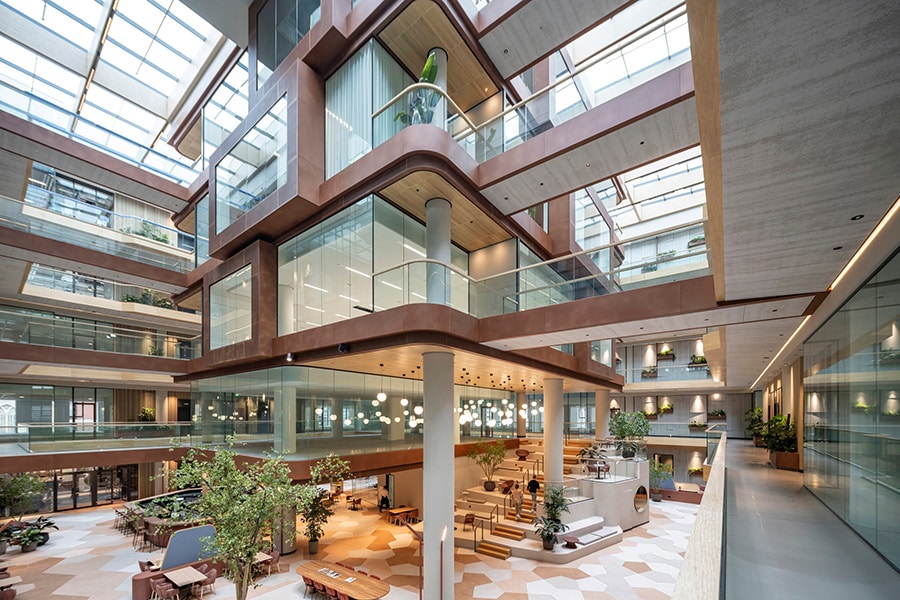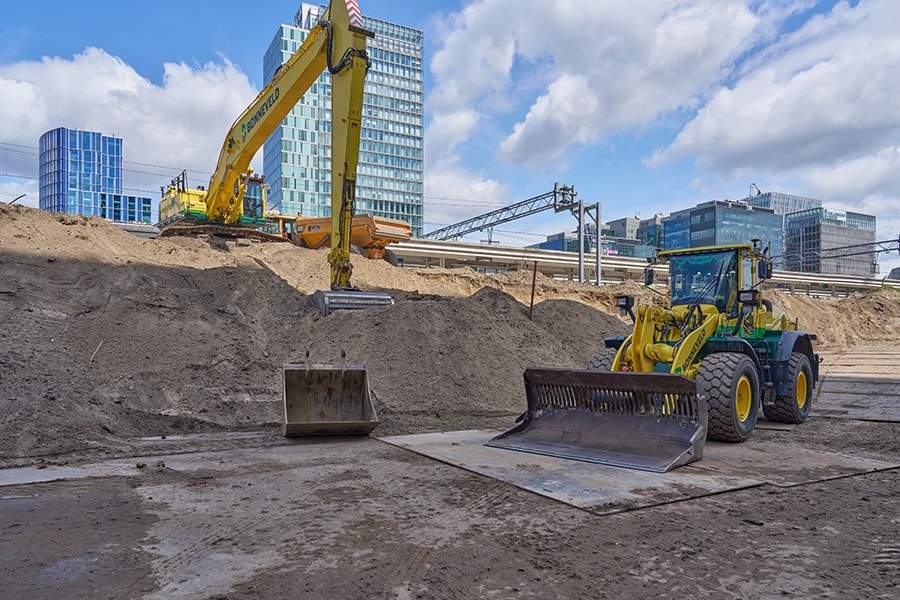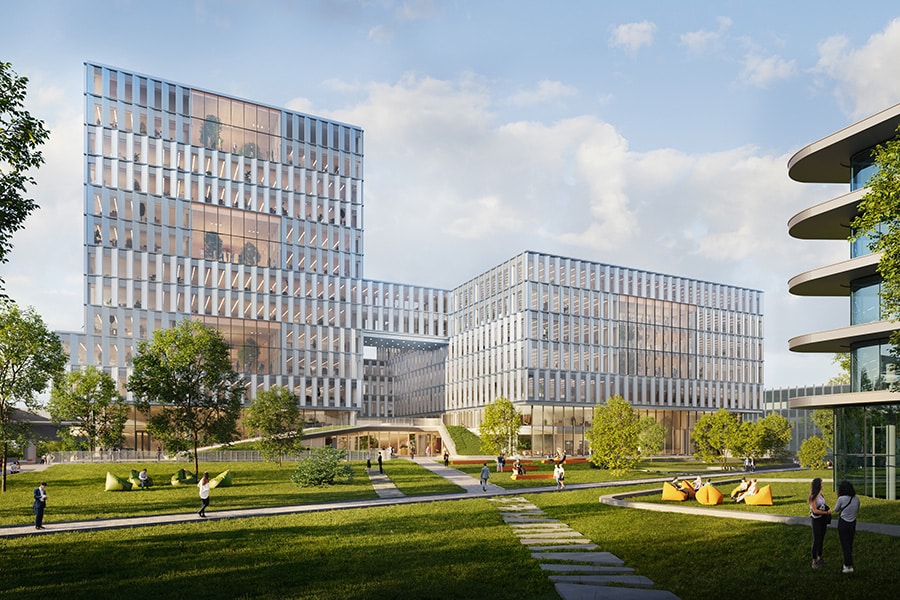
Smart ventilation and noise exclusion
Optimal living and sleeping comfort thanks to balcony glazing and facade screens
On the former site of painting company Koopmans in Harlingen, 45 rental apartments were recently realized, divided into two buildings. The apartments have an indoor storage room and a balcony facing north, east or west. To guarantee a high level of resident comfort and to prevent noise pollution from the N31, one building facade is (partially) soundproofed. Mview+ fitted the balconies here with M-view balcony glazing, which reduces noise by up to 20 dB. Silent Air façade screens have also been installed in front of the bedroom windows, allowing residents to sleep in peace.
Some of the noise from the N31 is kept out by the sunken location, knows Waldo Duin, director of Mview+. "For the second and third floors, however, soundproofing measures in accordance with the Building Code were necessary. On these floors, we installed our M-view balcony glazing on behalf of Aannemingsbedrijf Kuin." Approximately 80% of the balcony glazing is cantilevered, he says. "We developed a special suspension structure, which is placed on the balconies like an 'open table' and from which our balcony glazing can then be easily hung. The open top then creates a balcony with an outdoor climate, on which the minimum ventilation requirement of 3 liters/m2/sec is easily met. In addition, the accommodation area behind can be ventilated soundlessly."
Silent Air Sound Barriers
When building on noise-sensitive sites, it frequently happens that one facade is overloaded and must be deafened, Duin knows. "This sometimes makes the realization of residential buildings difficult. After all, residents must be able to ventilate (air out) all living areas, such as in this project also the bedrooms on the noise-exposed side. Our Silent Air Noise Screens offer a solution for this and can easily be installed in front of the parts to be opened, thus shifting the 'deaf' facade line."
Spray ventilation preserved
The patented Silent Air Sound Barriers are made of pre-stressed safety glass, combined with sound-absorbing coulisses. "The wings are constructed from a frame of perforated aluminum with a mineral filling, which absorbs incoming noise at the edge," Duin said. "Because sufficient free space is left between the façade and the noise barrier, spray ventilation of the space behind remains possible at all times. As a result, residents not only benefit from optimal living comfort, but their sleeping comfort is also guaranteed."



